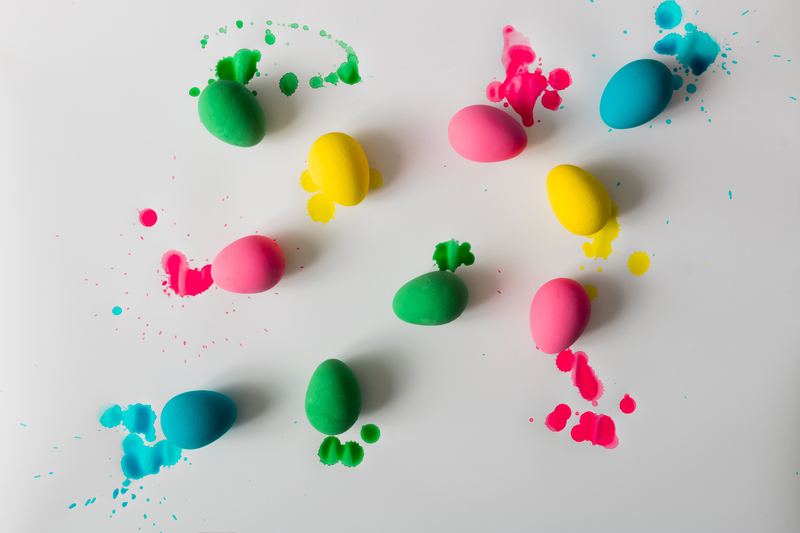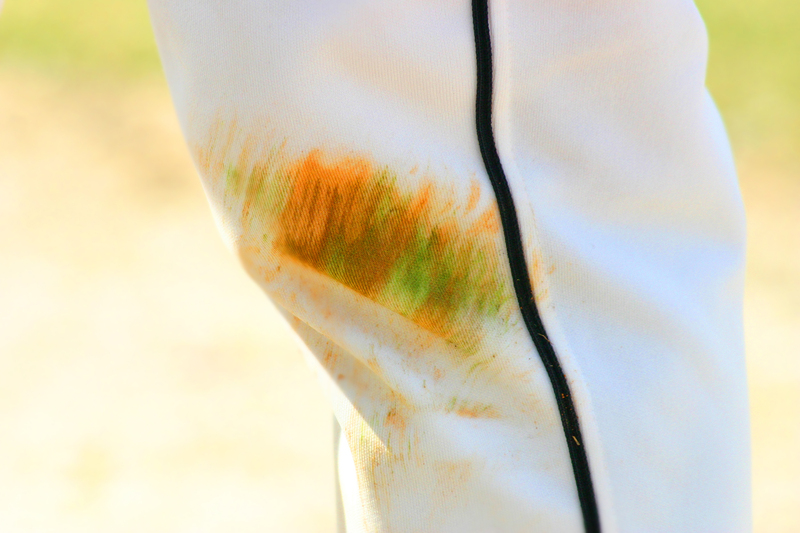Brilliance Restored with Proven Jewellery Cleaning Methods
Posted on 13/06/2025
Brilliance Restored with Proven Jewellery Cleaning Methods
Jewellery is more than just an accessory; it's an expression of your personality and style, often holding deep sentimental value. Over time, though, even the most exquisite pieces can lose their brilliance due to everyday wear, dust, oils, and environmental pollutants. If you find your favourite pieces looking dull and lacklustre, don't worry! With trusted jewellery cleaning methods, restoring shine and sparkle is simple and effective. In this comprehensive guide, we'll delve into a variety of safe, proven jewellery cleaning techniques that bring your treasures back to life and keep them dazzling for years.

Understanding Jewellery Tarnish and Dullness
Before diving into jewellery cleaning solutions, it's important to understand why jewellery loses its shine.
- Tarnish: Tarnish is a layer of corrosion that affects metals like sterling silver, gold, and even platinum. It commonly results from the metal reacting with sulfur or oxygen in the air.
- Residue buildup: Lotions, fragrances, soaps, and natural oils accumulate on your jewellery, dulling their sparkle.
- Dust and pollution: Fine particles can settle on jewellery and create a layer of grime.
- Wear and tear: Constant contact with skin, clothing, and the environment can cause minute scratches and dents, which scatter light and reduce brilliance.
Understanding these factors is the first step to choosing the right cleaning method for jewellery.
Essential Precautions Before Cleaning Jewellery
While we all want our pieces to shine, it's crucial to take precautions before applying any cleaning method to avoid damaging delicate items:
- Identify the material: Not all cleaning approaches suit every material. For example, soft stones like opals or pearls require an entirely different care routine compared with diamonds or sapphires.
- Inspect for damage: Loose stones or weak clasps can worsen if handled during cleaning, so always check your jewellery for vulnerabilities first.
- Avoid harsh chemicals: Bleach, acetone, and strong household cleaners can corrode metals or damage gemstones.
- Consult professionals for valuable or antique pieces: For irreplaceable heirlooms or expensive jewellery, ask your local jeweller about appropriate cleaning methods.
Home-Based Proven Jewellery Cleaning Methods
For most everyday jewellery, simple home remedies can perform wonders. Here's a list of the most effective and easy-to-follow proven jewellery cleaning methods that every owner should know.
1. Gentle Soap and Warm Water Solution
The classic combination of warm water and mild dish soap remains one of the most effective techniques for jewellery cleaning, especially for gold, platinum, diamonds, and hard gemstones.
- Mix a few drops of gentle dish soap with warm (not hot) water in a bowl.
- Soak your jewellery for 15-30 minutes to loosen dirt and oils.
- Use a soft-bristled toothbrush to gently scrub each piece, paying close attention to crevices and behind settings.
- Rinse thoroughly with clean water to remove soap residue.
- Pat dry with a lint-free, soft cloth.
This time-tested jewellery cleaning method is safe, cost-effective, and yields instant results for most non-porous gems and precious metals.
2. Professional Jewellery Cleaning Cloths
A jewellery polishing cloth is specifically formulated with micro-abrasives that remove tarnish from metals like silver and gold. These cloths are ideal for buffing up daily wear items.
- Use the inner treated layer to wipe away tarnish and dirt gently.
- Finish with the outer layer to polish and restore shine.
Pro tip: Never use regular tissues or paper towels; these materials can scratch delicate metals and gemstones.
3. Baking Soda and Water Paste
Perfect for stubborn tarnish, especially on silver jewellery, a paste of baking soda (bicarbonate of soda) and water can restore lost brilliance.
- Mix three parts baking soda with one part water to create a paste.
- Apply gently onto the jewellery using a soft cloth or toothbrush.
- Rub with light pressure, focusing on tarnished spots.
- Rinse thoroughly under lukewarm water and pat dry.
*Note: Avoid using this method on pieces with soft gemstones, pearls, or antique finishes, as it may be too abrasive.*
4. Aluminium Foil and Baking Soda Method
For heavy silver tarnish, try the aluminium foil and baking soda bath:
- Line a small bowl with aluminium foil, shiny side up.
- Add one tablespoon of baking soda and one tablespoon of salt.
- Pour hot (not boiling) water to activate the mixture.
- Place silver jewellery onto the foil and soak for 5-10 minutes.
- Rinse and dry thoroughly.
This method uses a mild chemical reaction to transfer tarnish from the silver to the foil, leaving your items looking as good as new!
5. Vinegar Cleaner (for Silver Jewellery Only)
Another proven jewellery cleaning technique for restoring silver's brilliance is vinegar:
- Soak silver pieces in a cup of white vinegar mixed with two tablespoons of baking soda for 2-3 hours.
- Rinse thoroughly and dry with a soft cloth.
Important: Never use vinegar on gold, gemstone, or plated items, as it can cause irreparable damage.
6. Ammonia Solution (for Gold and Diamond Jewellery)
An ammonia-based bath can quickly restore the sparkle of gold and diamond jewellery:
- Mix one part ammonia with six parts water in a bowl.
- Soak your jewellery for no more than one minute.
- Remove promptly, rinse under running water, and dry with a lint-free cloth.
Do not use ammonia on pearls, opals, or antique jewellery to prevent damage.
7. Ultrasonic Cleaners
For heavily soiled jewellery, especially intricate pieces, an ultrasonic jewellery cleaner (available online and in stores) uses high-frequency sound waves to dislodge dirt and grime.
- Fill the machine with the recommended cleaning solution and water.
- Place the jewellery inside and follow the manufacturer's instructions for cycle duration.
- Rinse and dry after cleaning.
Warning: Not all gemstone jewellery is suitable for ultrasonic cleaning. Always consult your jeweller beforehand.
Caring for Different Types of Jewellery
Each type of jewellery requires tailored care to preserve its brilliance. Here's how to safely clean the most common materials.
Gold Jewellery
- Stick with mild soap and water for regular cleaning.
- For stubborn spots, a touch of ammonia diluted with water works well.
- Polishing cloths can brighten up gold's natural sheen.
- Never use abrasive pastes or brushes, as gold is a soft metal and scratches easily.
Silver Jewellery
- Frequent use of a polishing cloth prevents heavy tarnish build-up.
- Baking soda or vinegar baths work wonders on stubborn tarnish.
- Store silver in anti-tarnish bags or cloths to prevent oxidisation.
- Never store silver with rubber bands or in tissue paper, which can accelerate tarnish.
Diamond and Gemstone Jewellery
- Mild soap and water is safe for hard stones like diamonds, rubies, and sapphires.
- Ultrasonic cleaners may be suitable for robust stones set securely in modern settings.
- Avoid harsh chemicals and extreme temperatures that can affect gem clarity.
- Soft stones like emeralds, opals, and turquoise should only be cleaned with a damp cloth and dried immediately.
Pearl and Delicate Jewellery
- Wipe pearls with a soft, slightly damp cloth after each use.
- Never soak pearls or use ultrasonic cleaners; their porous nature absorbs liquids, damaging their luster.
- Store pearls individually to avoid scratches.
Jewellery Cleaning Mistakes to Avoid
Even the most enthusiastic cleaning attempts can go awry if you're not careful. Protect your valuable pieces by avoiding these common mistakes:
- Using toothpaste or baking powder improperly: While baking soda can clean silver, it is too abrasive for gold or gemstones. Toothpaste often contains micro-particles that scratch surfaces.
- Overuse of ultrasonic cleaners: Not all jewellery tolerates this technique. Soft stones may fracture or loosen from mounts.
- Mistaking costume jewellery for real: Plated or glued items can suffer irreparable harm from water and chemicals.
- Ignoring manufacturer's guidelines: Always read any special instructions or warranty considerations before cleaning.
Professional Jewellery Cleaning Services
Sometimes, home remedies don't suffice--particularly for family heirlooms, intricate designs, or luxury pieces. Professional jewellers offer advanced cleaning services:
- Steam cleaning: A safe, effective way of loosening dirt without harsh chemicals.
- Polishing machines: Restore brilliance with professional-grade abrasives, carefully used to avoid wear.
- Quick repairs: Professionals can spot loose settings or damage you may have missed.
For a piece with sentimental or monetary value, schedule a cleaning and inspection at least once a year.
Jewellery Storage and Maintenance for Lasting Brilliance
The secret to preserving jewellery's shine isn't just cleaning--it's about smart storage and handling.
- Store individual pieces separately in soft-lined boxes or pouches.
- Use silica gel packets or anti-tarnish strips to absorb excess moisture.
- Remove jewellery before swimming, bathing, or exercising.
- Apply perfumes, creams, and lotions before wearing jewellery to minimize residue buildup.
These habits will greatly reduce the need for intensive cleaning, helping your jewellery remain as dazzling as the day you got it.

FAQs: Jewellery Cleaning and Restoration
How often should I clean my jewellery?
For everyday pieces, a monthly gentle clean is recommended. Prized or occasionally worn items should be inspected and cleaned every few months.
Is ultrasonic cleaning safe for all jewellery?
No, ultrasonic cleaning is not suitable for soft, porous, or heat-sensitive stones. Always verify compatibility before use.
How do I prevent tarnish on silver jewellery?
Regular cleaning and proper storage in anti-tarnish pouches or cloth will slow down oxidisation.
When should I consult a professional jeweller?
Seek expert advice for antique pieces, damaged items, or luxury jewellery with intricate settings.
Conclusion: Restore Your Jewellery's Brilliance and Shine
Jewellery is designed to be cherished, worn, and admired. Over time, though, its brilliance can fade. With these proven jewellery cleaning techniques, you can restore your favourite pieces to their original dazzling beauty. Remember, gentle and regular care is the key--combined with occasional professional attention for extra-special pieces. By understanding your jewellery's unique needs, using safe cleaning methods, and storing items correctly, you'll keep your collection sparkling for a lifetime. Let the brilliance of your jewellery shine once again with confidence!




